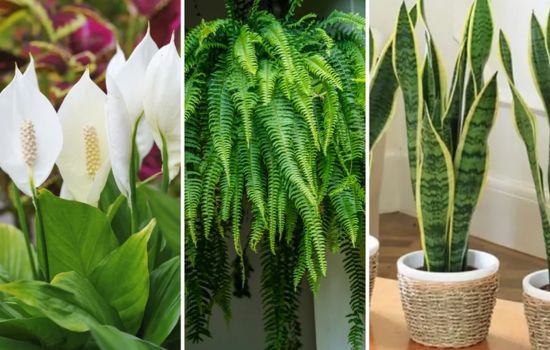Every morning, as you leave your house, you pass by hundreds of volumes of a living encyclopedia that humanity has been writing for millions of years.
A plan is a page. Each page is a paragraph packed with information.
But here's the problem: we don't know how to read this green language.
Until now.
See also
- The sound that changed everything while no one was looking
- The sound that changed everything while no one was looking
- Your Phone: The Train of the Future
- Are You a Genius? These Apps Have the Answer
- Browse Offline: Free Apps Guide
The universal translator you were waiting for
Remember when smartphones transformed the way we navigate cities? We no longer need to memorize streets or carry paper maps.
The same thing is happening with plants.
Artificial intelligence has created a universal translator for botanical language, and it is quietly revolutionizing the way we interact with the green world around us.
The story that no one tells
In 2011, a group of programmers, frustrated by their inability to identify the plants in their gardens, decided to train computers to do what humans had failed to do: recognize plant species with a simple glance.
Ten years later, these systems have achieved a precision that surpasses that of many professional botanists.
The future arrived without us realizing it.
The pioneers of the digital green revolution
In this application ecosystem, three species have emerged as dominant, each with its own evolutionary strategy:
PictureThis – The personal mentor
If plants could choose how to present themselves to the world, they would choose PictureThis.
This app not only tells you what you're looking at, but also becomes your personal plant consultant.
His arsenal includes:
- Instant identification of over 17,000 species
- Medical diagnostic system for diseased plants
- Species- and location-specific care guides
- Smart reminders based on the needs of each plant
The first time I tried it, I photographed a half-dead succulent in my office. Not only did it identify it as Echeveria elegans, but it also explained exactly why it was dying (overwatering) and how to save it.
Three weeks later, it was blooming.
PlantNet – The pure scientist
While other apps chase the mass market, PlantNet maintains its academic integrity intact.
Born in French research laboratories, this app is the botanical equivalent of a peer-reviewed scientific journal.
His credentials:
- Developed by world-class research institutes
- Database curated exclusively by experts
- Algorithms trained with specimens from historical herbaria
- Rigorous scientific methodology in each identification
iNaturalist – The social revolutionary
This is where plant identification transcends the individual and becomes a collective movement.
iNaturalist has brilliantly gamified citizen science.
The concept is simple but powerful:
- Each observation feeds global scientific databases
- A community of experts verifies complex identifications
- Real research projects where anyone can contribute
- Collaboratively constructed biodiversity maps
Your casual curiosity turns into real scientific contribution.
The secrets are in the details
Texture of the leaves → Reveals survival strategies
Rib pattern → As unique fingerprints
Arrangement on the stem → Mathematical optimization to capture light
Shape of the flowers → Coevolution with specific pollinators
Each feature tells a fascinating evolutionary story.
The "botanical eye" technique
Experts develop what they call "pattern vision." They don't see individual plants, but rather families, genera, and adaptations.
How to train your eye:
- Observe before you photograph → 30 seconds of conscious contemplation
- Look for the unique → What makes this plant special?
- Compare mentally → What is it similar to? How is it different?
- Document systematically → Multiple angles, different scales
This practice literally transforms your brain.
The urban mysteries hidden in plants
Cities are accidental botanical laboratories where species from all over the world coexist in artificial spaces.
Silent invaders
That "common plant" in the park could be an invasive species disrupting local ecosystems. Apps show you invasion maps in real time.
Urban Survivors
Some plants have developed specific adaptations to survive in urban environments: smaller leaves to resist pollution, modified roots to grow in compacted soils.
Hidden green pharmacies
Many urban "weeds" are traditional medicinal plants. Your apps may let you know you're in a natural pharmacy.
The neuroscience of plant recognition
What happens in your brain when you identify a plant is fascinating.
The botanical "eureka" effect
Each successful identification activates the same reward circuits as other intellectual achievements. Learning plant names is literally addictive.
Formation of new neural networks
Your brain creates specific connections to categorize plant information. Regular users develop more developed brain areas for processing botanical information.
Improved spatial memory
Knowing plants improves your ability to remember places. Landscapes become more memorable when you can "read" their plant composition.
The limits of green artificial intelligence
Even the best technology has blind spots you should be aware of:
The problem of variability
The same species can look completely different depending on:
- Age of the plant
- Growth conditions
- Time of year
- Environmental stress
- Natural hybridization
Problematic plants
Cryptic species → Visually identical but genetically different
Hybrid complexes → Natural crosses that confuse algorithms
Juvenile forms → No distinctive features developed
Cultivated plants → Modified by artificial selection
The 80/20 rule
The apps correctly identify the 80% of common plants, but that last 20% requires specialized human expertise.
The butterfly effect of botanical knowledge
Getting to know plants triggers unpredictable changes in your life:
Transformation of personal space
Users report:
- Compulsive plant buying after identifying attractive species
- Garden redesign based on identified native plants
- More time spent on outdoor activities
Changes in usual routes
You begin to choose paths based on botanical diversity. Your commute becomes a scientific expedition.
New social connections
Plants become a topic of conversation. Gardeners recognize each other by their specific botanical vocabulary.
Mistakes beginners make
After looking at thousands of IDs, these are the most common mistakes:
Blind trust in the first suggestion
Apps offer probabilities, not absolute certainties. Always verify with multiple sources.
Poor quality photos
A blurry, poorly framed, or poorly lit image is worse than no photo at all.
Ignoring the ecological context
A desert plant won't grow naturally in a swamp. Common sense is your best filter.
Failure to document observations
Without records, you miss the opportunity to learn patterns and improve your identification skills.
The future of digital botany
The next decade promises revolutionary advances:
Multisensory identification
Apps that incorporate sound (rustling leaves), smell (chemical analysis of aromas), and touch (digitalized texture).
Prediction of seasonal changes
Systems that show you what a plant will look like at different times of the year.
Forensic botany
Species identification from microscopic fragments for environmental and legal research.
Predictive gardening
Apps that simulate plant growth in your specific space before planting.
The digital garden of infinite possibilities
Every day you don't use these tools is a lost day of potential discoveries.
The paradox of knowledge
The more plants you learn, the more you realize how much you don't know. It's an endless cycle of learning that never ceases to amaze.
The multiplier effect
One identification leads to another. A plant family introduces you to a whole branch of botanical knowledge. A casual stroll turns into a scientific expedition.
Plant knowledge is exponential.

Conclusion
Right now, wherever you are, there are plants all around you with extraordinary stories to tell.
That vine climbing the wall of your building could be native to a distant continent, brought by explorers centuries ago. The tree under which you sit for lunch may be a survivor of prehistoric ecosystems.
Apps like PictureThis, PlantNet, and iNaturalist aren't just identification tools. They're catalysts for personal transformation.
They transform you from a passive observer into an active explorer. From an unconscious inhabitant into a citizen scientist. From a person who walks among plants into someone who dialogues with ecosystems.
The difference between living in a world of anonymous green shapes and inhabiting a planet full of fascinating species with unique names, stories and properties is a single application downloaded.
Your first identification will be the moment that divides your life into "before" and "after" botanical knowledge.
Nature has been waiting for millennia for us to develop the technology to understand its language.
That moment has arrived. Your adventure of discovery begins now.









